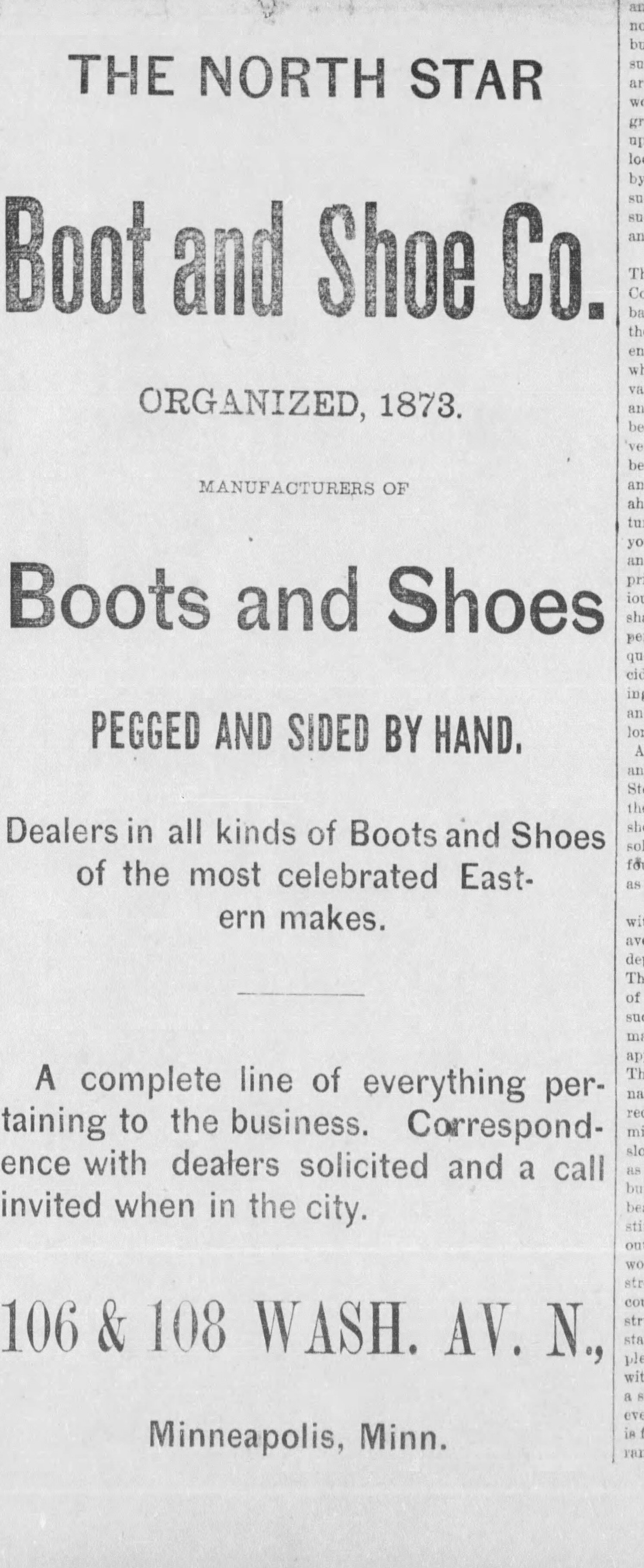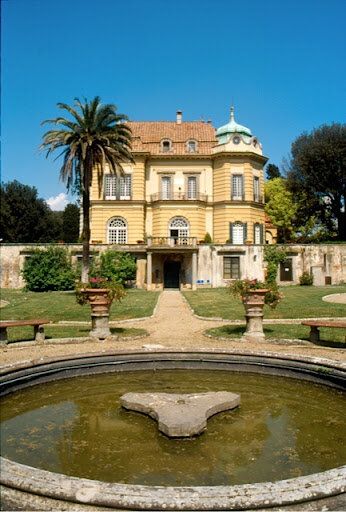Footwear, Football, and...Fountains?
Many Minnesotans, myself included, spend fall weekends watching football. In person or on television the Gophers and the Vikings have an active fanbase (smaller than we would like, and fickle, but still…). I’ve learned a lot about football and feel pretty confident in my knowledge of “who’s who” in the pantheon of players. So, I was surprised to discover I had never heard of one of the biggest names in football to come out of the North Star state. Neither the Minnesota “M” Club or the Vikings’ museum makes mention of him, so who is this gridiron great?
His name was William Walter Heffelfinger and he was born on Dec. 20, 1867 in Minneapolis. His father was in the shoemaking business and the family lived in a tiny house wedged between industrial buildings. The family worked hard to build the business and advertisements were standard fare in the newspapers.
Walter was given the nickname “Pudge” and played baseball and football at Central High School in Minneapolis. His athletic ability and natural size were soon getting noticed. At the age of 15 he started playing football for the University of Minnesota (there were no eligibility rules then) before making his way to Yale University where he attended the school from 1888 to 1891. At 6-foot-2 and 200 pounds he was exceptionally larger than his peers and legendary status on campus came quickly. Playing both offense and defense, Heffelfinger was named to Walter Camp’s All-American Team three times (it would have been four, but the honor didn’t exist his freshman season). Yale was a major football power at that time and Heffelfinger helped lead the team to undefeated seasons in 1888 and 1891 and one-loss seasons in 1889 and 1890. The 1888 team amazingly outscored their opponents 698-0 that season. Pudge not only lettered in football, but he also lettered in baseball, rowing, and track.
Some historians will argue that Pudge’s father, Christopher, is the more famous Heffelfinger. The state of Minnesota raised the first regiment to defend the union in the Civil War and Christopher Beistle Heffelfinger enlisted as soon as he could on Apr 29, 1861. He signed up as a private in Co. D, 1st Minnesota Infantry and got his first promotion, to sergeant, within 24 hours. Seven months later he was commissioned as a 2nd lieutenant and promoted to 1st lieutenant less than a year after that. In the battle of Gettysburg, he was shot in the chest but survived because he was carrying a pocketbook in his chest pocket. After being promoted to captain and retiring from the military, Captain Heffelfinger settled in Minneapolis and opened the North Star Boot and Shoe Company.
After his graduation from Yale, Pudge worked as a railroad office worker in Omaha, but he took a leave of absence for a six-game barnstorming tour with the Chicago Athletic Club’s football team. At this time, football teams were a part of men’s social clubs and were purely amateur. As betting on the games increased, clubs started experimenting with bringing in “associate members” (aka ringers) to augment their team rosters. In 1892, both the Pittsburgh and Allegheny Athletic Clubs were desperate to bring in the great Heffelfinger to secure a win in the rival game set for November 12. For $500 (about $14,000 today) he helped Allegheny defeat its archrival and - through receipts discovered later - technically became the first known professional football player. Historians suspect players were paid under the table before Nov. 12, 1892, but no documents exist to prove it.
Pudge then took a variety of coaching jobs at the University of California Berkeley, Lehigh University in Bethlehem, Pennsylvania, and the 1895 season at the University of Minnesota. He also frequently returned to Yale to coach and scrimmage with the new players.
In 1901, he married Harriet Grace Pierce and settled down in the family shoe business and real estate with his father and brother, Frank. In the 1930s, he founded Heffelfinger Publications which produced sales booklets for football and baseball equipment. Heffelfinger also authored Heffelfinger’s Football Facts, an annual publication that featured statistics and schedules for both college and pro teams. The booklets, published between 1935 and 1950, were the first of its kind. Harnessing Heffelfinger’s star status, the booklets helped attract a new audience to the game. Soon, every sport had its own version.
Heffelfinger also found success in politics. He was a Minnesota delegate to the Republican National Conventions in 1904 and 1908. He also served as Hennepin County Commissioner from 1924 to 1948 and even ran for Congress in 1930.
Pudge stayed in playing shape throughout his life. Even in his 40s, he was still suiting up to practice at Yale and he played in a pro game against the Columbus Panhandles. It was the first game he played wearing shoulder pads and a helmet. Unbelievably, he continued as a regular in charity games into his mid-60s and played his last organized football game in a charity event in Minneapolis at the age of 65. He managed to play for nine minutes before a knee injury took him out, but the Heffelfinger name brought in plenty of donations to make it worthwhile.
In 1946, Heffelfinger was added to the All-Time American Team selected by sports writers. The team also included Jim Thorpe (Carlisle), Don Hutson (Alabama), Duke Slater (Iowa), and Bronko Nagurski (Minnesota). Pudge was inducted into the Football Hall of Fame in Ohio in 1951.
Pudge’s brother, Frank, also became an important figure in Minnesota. Although not as memorable a player as his brother, Frank coached the 1889 season at the University of Minnesota. After the family business was sold, Frank began working in the grain business and joined F. H. Peavey & Co. He became president of the grain firm in 1907 and stayed in that role until 1945. He was also the founder, trustee or board member for various banks and the Soo Line Railroad. Frank married Lucia Louise Peavey and cemented the family's status among the Minneapolis elite. No longer living in the tiny house downtown, the Heffelfingers had estates on Park Avenue and Lake Minnetonka.
In retirement, Pudge and Grace moved to her native Texas and “Live Oak Farm,” near Blessing. William died on April 2, 1954. They’ve placed a historical marker in his honor in Texas. You would think that he had lived there his whole life.
After all of the Heffelfingers’ accomplishments, business success, and community involvement, there is very little evidence of them in Minneapolis today. Their homes and businesses have all been demolished. Surprisingly, the only physical representation of the family is an Italian fountain at the Lyndale Rose Garden near Lake Harriet.
The Heffelfinger Fountain was donated in 1944 by Frank T. Heffelfinger after he bought it during a trip to Italy. The bronze and marble fountain was designed and built for the Villa Montalto in Fiesole. The upper basin is surrounded by cherubs and there are three satyrs around the base. If you walk around the fountain you can see that the satyrs progress in age, particularly seen in their horns and beards. It’s a beautiful fountain, the oldest in the entire park system and a wonderful addition. Sadly, there isn’t even a plaque or any signage to commemorate the Heffelfinger family.
How has Minnesota, Minneapolis, and the football fanbase missed such an opportunity to claim one of the greatest football players to ever live as one of our own? Why are we not lording it over our cheesehead and badger friends that we raised the first professional football player and one of the greatest of all time? How has the name “Heffelfinger” disappeared from our vocabulary?
We may argue about coaching strategies, players’ contracts, game decisions and more. Certainly remembering Pudge Heffelfinger and giving him the honors he deserves can be one small cause to unite us.



























